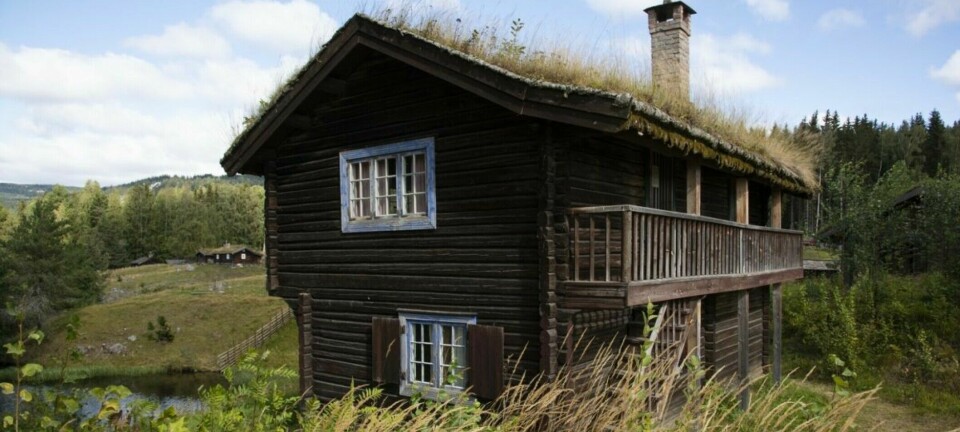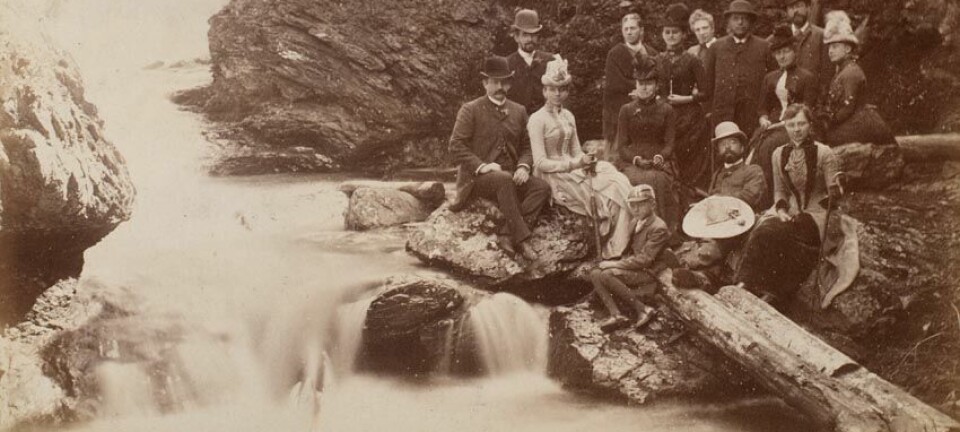
Should cabin owners in Norway pay extra tax?
Cabin construction is now the main reason for the development of much Norwegian mountain nature.
It is winter break in many places in Norway. People look forward to going to their cabins. To long ski trips in untouched nature, a nice glass of red wine, and a lot of comfort in a cabin that increasingly often has as much space as people have at home. Around the cabin, there is usually also plenty of space.
Cabin life is a part of the Norwegian soul, many would claim.
However, researchers are now dampening the cabin enthusiasts’ spirits.
Cabins must become more expensive
We need to make owning a cabin in Norway more expensive, they suggest.
Ideally, no more cabins should be built. If new cabins are deemed necessary, they should be built much closer to one another than before.
There is also a call for improved sharing of existing cabins.

These recommendations were part of a seminar on cabin construction recently hosted by the Norwegian University of Life Sciences (NMBU).
The number of cabins could be doubled
There are already nearly half a million cabins in Norway.
But according to the plans that lie in the offices of Norwegian cabin municipalities, the development has only reached halfway. If things go as these municipalities envision, the number of cabins could be doubled.
Cabin life is cherished by many. Yet, in our quest to draw nearer to nature, we paradoxically encroach upon it even more. Statistics Norway reports that a mere 3 per cent of cabins constructed between 2008 and 2019 were built on previously developed sites.
Many new private roads
The recent push for new cabin areas has triggered a boom in the construction of private roads.
Statistics Norway expects continued extensive cabin construction in the coming years, primarily in areas and natural environments far from established settlements, and especially in municipalities with few inhabitants.
Cabin construction accounted for 40 per cent of the reduction of forests and 30 per cent of the reduction of wetlands in Norway in the period 2008 to 2019.
Who should feel cabin shame?
Hytteskam (cabin shame) is a new word in the Norwegian language. But who should feel this shame?
Municipal politicians are tempted. The development of new cabins creates local jobs and increases turnover in local retail. Local craftsmen get jobs.
“If there’s anyone who should feel cabin shame in Norway, it’s not the individual cabin owner. It’s the central politicians,” Lars Haltbrekken said at the NMBU seminar.
The former leader of Friends of the Earth Norway is now himself a member of parliament for the Socialist Left Party. He is one of several politicians who have called for a national ban on new cabin developments, a proposal that has not achieved a majority in the Storting.
Should introduce a fee
Ståle Navrud is a professor at NMBU’s School of Economics and Business. Among other things, he researches the footprint of cabin building.
Navrud is worried.
“Nature is under pressure,” he says.
The Norwegian Broadcasting Corporation NRK and NINA's investigations in connection with the NRK series Oppsynsmannen (The Warden) show that 79 square metres of Norwegian nature disappear every minute. That equates to one football pitch every hour.
“That’s a lot. But encroaching upon Norwegian nature is completely free,” says Navrud.
What do people want?
In one study, Navrud and colleagues investigate whether people are interested in more cabin development – and if they are willing to pay to preserve nature and reduce cabin construction.
The researchers have based their study on the area of Norefjell-Reinsjøfjell in Eastern Norway. This area is also home to wild reindeer, a species Norway has specifically pledged to protect.
The mountain area of Norefjell-Reinsjøfjell now has 7,500 cabins. But the municipalities that the area is part of, are interested in building more. They will process applications to build up to 8,000 new cabins in the coming years.
Want less cabin construction
Do people want all this development? Or do they want reduced construction?
To get an answer to this, the researchers conducted a survey among people living in the municipalities connected to Norefjell-Reinsjøfjell. They also asked people who have cabins in the area. Finally, they asked a representative sample of people in neighbouring counties Viken and Oslo.
Those who responded to the survey were shown maps of the planned development. They were also told how more development would affect the landscape, wild reindeer, and hiking trails.
Faced with the choice between three levels of cabin development – minimal, moderate, or extensive – the majority of respondents opted for the least amount of development.
Willing to pay tax for nature
“We also find that people are willing to pay to reduce the development from 6,000 to 500 cabins,” says Navrud.
The willingness to pay, in the form of increased taxes, is greatest among those who live closest to Norefjell-Reinsjøfjell. However, it is almost as high among those who own cabins in the area. The willingness to pay is somewhat lower among those who live further away.
It should be noted that the researchers also find a significant willingness to pay among the residents of Viken and Oslo who do not have cabins in the area.
Residents of the municipalities and cabin owners in the area are willing to pay around NOK 3,000 (285 USD) per year in increased taxes until 2040 to reduce cabin construction.
Households in Oslo and Viken state they would pay NOK 1,000 (95 USD) per household.
The researchers explain this with the negative effects of cabin development on biodiversity and the mountain landscape, which have received a lot of attention in the Norwegian media in recent years. They are not surprised that people outside the local community are also willing to pay more tax to reduce the development of Norwegian nature.
The value of untouched nature
NMBU, Menon Economics, and Statistics Norway have also conducted a cost-benefit analysis on the value creation of cabin development.
The conclusion is that the benefits of extensive cottage development are greatest for the residents of the cabin municipalities.
Expanding the analysis to also include people in the Oslo area, it is extremely unprofitable to encroach on nature with new cabins, Navrud says.
“The value of untouched nature is not included in the local accounts. It should be, because it’s profitable for the larger community to preserve this common good. The more we lose, the scarcer the resource becomes, and the more valuable untouched nature becomes. Not just for us, but also for future generations,” he says.
The municipality has the most power
We need to think differently about how we plan, says Jin Xue. She is a professor of urban and regional planning at NMBU and researches holiday homes.
Today, the municipalities have the largest responsibility for development. But climate and nature considerations are often deprioritised in the political process, Xue believes.
She thinks we should legislate climate goals and goals for nature that obligate municipalities to take more consideration of nature.
Several effective measures
There are many effective measures that municipalities can use to build cabins more sustainably, Xue points out.
One example is densification of the cabins. Another is to place the cabins more purposefully in relation to the village and existing trails and paths. Better options for public transport are also a possibility.
All of this can contribute to a reduction in encroachments on nature. But it will not stop them.
Sharing cabins?
Jin Xue also researches cabin sharing as a solution to avoid building new ones.
“If we share the cabins, we avoid building many more. But this requires a political and cultural change,” she says.
Cabin sharing is also not necessarily positive. Because if even more people go to the cabin, it is not necessarily good for the environment.
“All of these are questions we should investigate. The answer partly depends on whether increased cabin use replaces environmentally unfriendly, long-distance vacations,” the professor told forskning.no in 2021 (link in Norwegian).
One municipality has chosen to densify
In the municipality of Krødsherad in Eastern Norway, they have chosen densification.
The municipality is also actively working to establish public transport to the cabin areas, former mayor Knut Martin Glesne said at the NMBU seminar.
Krødsherad municipality has 2,200 inhabitants and around 2,500 cabins.
The municipality is also responsible for both high mountains and wild reindeer.
The pressure to build more cabins in the municipality has long been high. Large cabin areas were developed in the 1960s. Here, the plan is for there to be a lot of densification, Glesne said.
“Younger people have taken over these cabins. They think densification is okay. I assume it wouldn't have been okay 20 years ago. There’s a different attitude towards this among the younger generation,” he believes.
———
Translated by Alette Bjordal Gjellesvik
Read the Norwegian version of this article on forskning.no
References:
Planlagt utbygd areal 2019-2030 (Planned developed area 2019-2030), Statistics Norway, 2020.
Ser vi atter slike fjell og dalar? Avveingen mellom lokaløkonomi og naturkostnader ved hytteutbygging (Will we see such mountains and valleys again? The balance between local economy and natural costs of cabin development), Samfunnsøkonomen 1-2023, 2023.







































